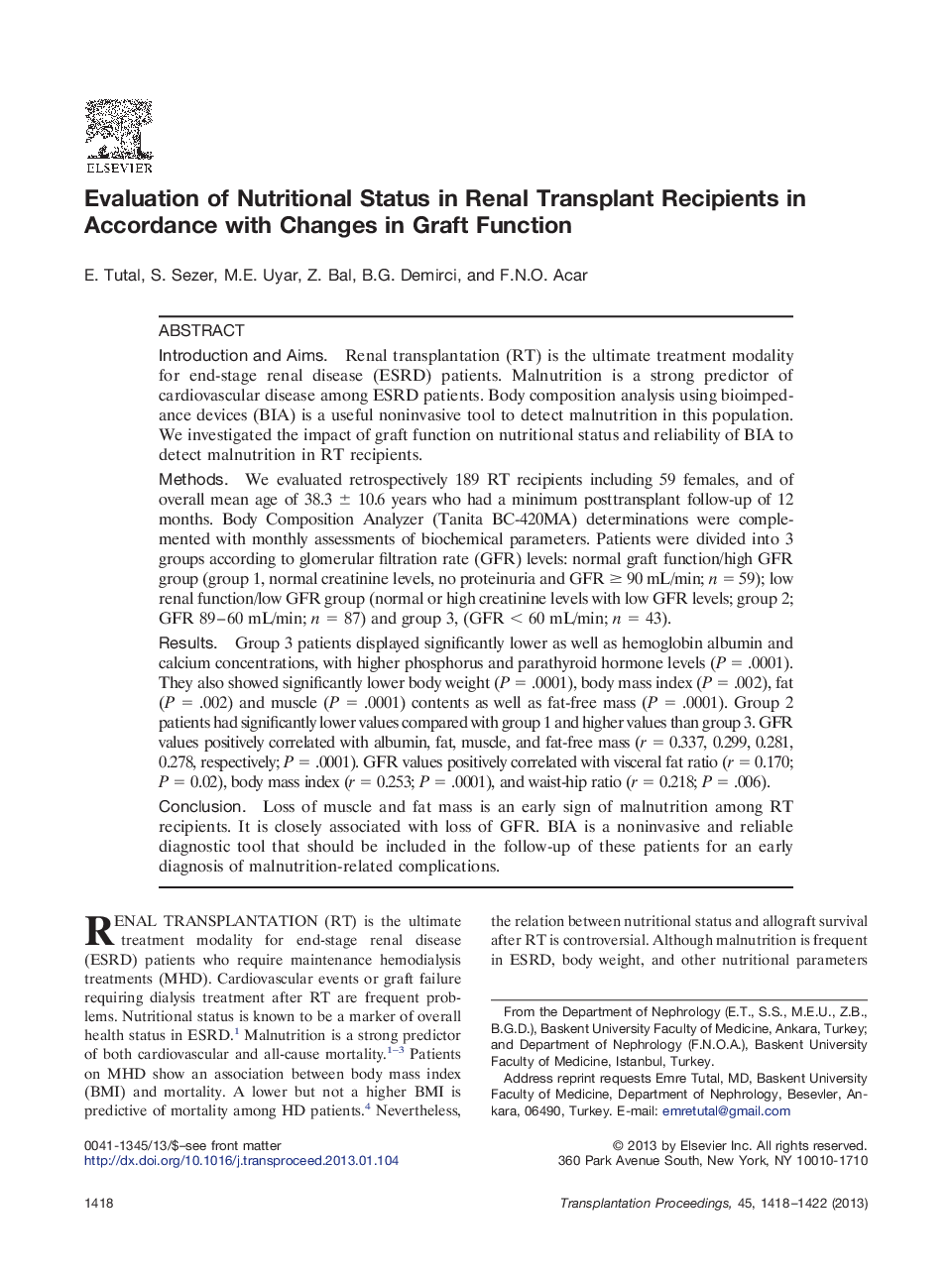| Article ID | Journal | Published Year | Pages | File Type |
|---|---|---|---|---|
| 4257286 | Transplantation Proceedings | 2013 | 5 Pages |
Introduction and AimsRenal transplantation (RT) is the ultimate treatment modality for end-stage renal disease (ESRD) patients. Malnutrition is a strong predictor of cardiovascular disease among ESRD patients. Body composition analysis using bioimpedance devices (BIA) is a useful noninvasive tool to detect malnutrition in this population. We investigated the impact of graft function on nutritional status and reliability of BIA to detect malnutrition in RT recipients.MethodsWe evaluated retrospectively 189 RT recipients including 59 females, and of overall mean age of 38.3 ± 10.6 years who had a minimum posttransplant follow-up of 12 months. Body Composition Analyzer (Tanita BC-420MA) determinations were complemented with monthly assessments of biochemical parameters. Patients were divided into 3 groups according to glomerular filtration rate (GFR) levels: normal graft function/high GFR group (group 1, normal creatinine levels, no proteinuria and GFR ≥ 90 mL/min; n = 59); low renal function/low GFR group (normal or high creatinine levels with low GFR levels; group 2; GFR 89–60 mL/min; n = 87) and group 3, (GFR < 60 mL/min; n = 43).ResultsGroup 3 patients displayed significantly lower as well as hemoglobin albumin and calcium concentrations, with higher phosphorus and parathyroid hormone levels (P = .0001). They also showed significantly lower body weight (P = .0001), body mass index (P = .002), fat (P = .002) and muscle (P = .0001) contents as well as fat-free mass (P = .0001). Group 2 patients had significantly lower values compared with group 1 and higher values than group 3. GFR values positively correlated with albumin, fat, muscle, and fat-free mass (r = 0.337, 0.299, 0.281, 0.278, respectively; P = .0001). GFR values positively correlated with visceral fat ratio (r = 0.170; P = 0.02), body mass index (r = 0.253; P = .0001), and waist-hip ratio (r = 0.218; P = .006).ConclusionLoss of muscle and fat mass is an early sign of malnutrition among RT recipients. It is closely associated with loss of GFR. BIA is a noninvasive and reliable diagnostic tool that should be included in the follow-up of these patients for an early diagnosis of malnutrition-related complications.
